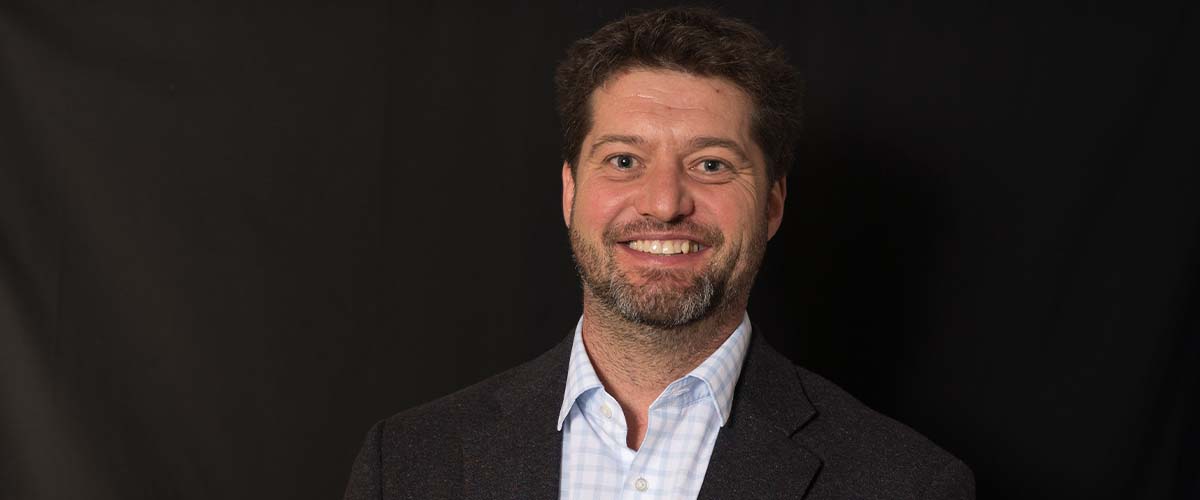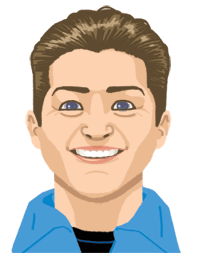
Physicist Ross McDonald pushes experimental boundaries with his work in Los Alamos.

Ross McDonald
By the time most aspiring scientists are finished with graduate school, they’re ready to take a break from their graduate advisors for a while. So when Ross McDonald received his doctorate from the University of Oxford a decade ago, he packed his things and moved halfway around the world to Los Alamos National Laboratory … only to find his advisor, John Singleton, was planning a similar move. Like McDonald, Singleton is now a full-time staff member at Los Alamos.
McDonald has turned that parallel path into a fruitful, long-lasting and rare intellectual relationship, one that’s shared by many of the staff at Los Alamos — where the scientific problems are grand in scale, the quarters are close, and one experimental mistake can mean millions of dollars and years of delay. Here, he discusses his path to science and what it means to be an experimentalist.
In a couple of sentences, how would you describe your job?
I’m an experimental physicist. A large part of my job within the Magnet Lab is to do user support. Users are scientists from all over the world who want to come and do experiments in our unique facility at magnetic field strengths they don’t have access to in their own labs. I help them get the most out of their magnet time, which in turn has led to some great and long lasting collaborations.
What’s the best part of your job?
It’s like exploring everyday. We’re looking for something new, something different. And sometimes that’s a big step into the unknown, but more often it’s looking at the tiny details that end up informing those bigger steps. It’s not just boldly thrashing your way into the jungle exploring, it’s really trying to understand what you’re observing as you go and putting it into the context of the bigger picture. By this I mean it’s really exciting when your measurements don’t just inform you about that particular material, but lead to a greater understanding of a whole family of materials. It might be a magnetic system, and you address why one material is more magnetic than another one. It might be a superconductor, and you begin to understand why one has a higher transition temperature than another, or why this is a better, or worse, metal.
I was always interested in how things worked. A lot of scientists never grow up, they never stop asking why.
What about Los Alamos has kept you here?
The skiing. Entirely the skiing. No, what’s kept me at Los Alamos is something that’s common to the whole of the Magnet Lab. It’s the daily interaction with a wide range of scientists, not just within your particular group or department, like at a university, but the exposure to so many different people, ideas and materials. At Los Alamos, I’ve really liked the challenge of doing experiments in pulsed magnetic fields. I enjoy the innovation necessary to be able to pull off challenging experiments — being driven by the underlying physics problem to push the experimental boundaries.
Did you always know you wanted to be a scientist?
I was always interested in how things worked. A lot of scientists never grow up, they never stop asking why. My parents always go back to when I was 3 years old, and I took their vacuum cleaner apart. Luckily it wasn’t a working vacuum cleaner, but the carpet and I were both black from the carbon brushes in the motor. Yet I still received nothing but encouragement.
I always liked the practical side of doing science and realized quite early in school that often someone else couldn’t provide a satisfactory answer. I think that’s the foundation for all experimental physicists: You’re trying to answer questions for yourself. Why does this happen? What if I do this? Kids naturally do this, and I’m getting a real kick watching my own kids start this exploration. I just want to make sure schooling doesn’t make them grow out of it.
But how did you extrapolate that curiosity into physics?
I was always playing with odd bits of electronics. Cobbling things together always seemed natural to me, and I guess I sort of fell into doing experiments.
Physics always seemed quite intuitive to me — and being lazy, I liked that there are very few facts to remember versus concepts to understand. Luckily I’m still learning, playing and tinkering every day.
What about being an experimentalist in particular suits you?
I’m a really hands-on person. I love making things, but I think I would be bored very quickly without the motivation from the physics, the samples, the materials. I may get engrossed in the details of how to make a particular measurement, or how I can improve the signal to noise, and I love that hands-on aspect, but it’s the fact that it’s so linked to these abstract concepts — for example, a material’s Fermi surface morphology or the nature of its magnetic interactions. From time to time, I’ll be up on a magnet platform banging things with a hammer or in the machine shop, but the thing that really gets me out of bed is the understanding, the science. Maybe I spend a little too much time being a jack-of-all-trades, but I think that’s a shared characteristic of everyone who thrives at the Pulsed Field Facility.
What’s the office environment like at a place like Los Alamos?
I guess it’s pretty uncommon to have a group of people maintain such a stimulating, intellectual relationship for a decade — longer than that for many people here. We all get along well, and we all have some idea about each other’s research. We are all interested in magnet design: Why this magnet failed on a particular occasion, why is this measurement noisier than when we’ve done this sort of experiment before? We’re all involved in the hands-on details, as well as crunching the data and doing the calculations to design the next experiments. I think one of the neatest things about being here is that our doors are usually open — which really fosters a collaborative environment where it’s the norm to work together.
This story was originally published in Issue 9 of flux magazine, a discontinued publication of the National High Magnetic Field Laboratory.
By MagLab Public Affairs
Last modified on 31 October 2022